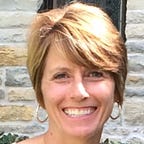Making Space for New Life
Had I just driven onto a movie set?
As I pulled into the parking area, three jeeps, carrying men in yellow suits, approached from the south. They pulled over, hopped out and walked into the field. They were carrying, ummm… hand-held flame throwers? Within seconds,brown grasses were vanishing as smoke plumed.
What was going on?
Unfortunately, it was not my opportunity for a walk-on role. The Wisconsin Department of Natural Resources was conducting a prescribed burn. It was all very safe, controlled and anti-climatic.
Every spring, the DNR gets a jump on the job that used to be primarily performed by lightening bolts. Trained workers, wearing fire-retardant suits, carry out prescribed burns with drip torches. They scorch the dead scrub which allows for safe rejuvenation of grasses, native plants, and cattails growing throughout the marsh. Post burn, the landscape looks pretty bleak. The ground is black and eerily reminiscent of an apocalyptic movie scene, but new life quickly returns from the roots.
Rain, sunshine and warming temperatures encourage fresh new vegetation. The feathered and furry maintain cover in untouched areas, but benefit from plant diversity and healthy new food sources.
What I’ve witnessed over the last three weeks might never play on the big screen, but the prescribed burn offers an important and intriguing message.
Sometimes to bring forth new life, steps must be taken to clear away the obsolete — the lifeless charred, making room for brilliant shades of green.
